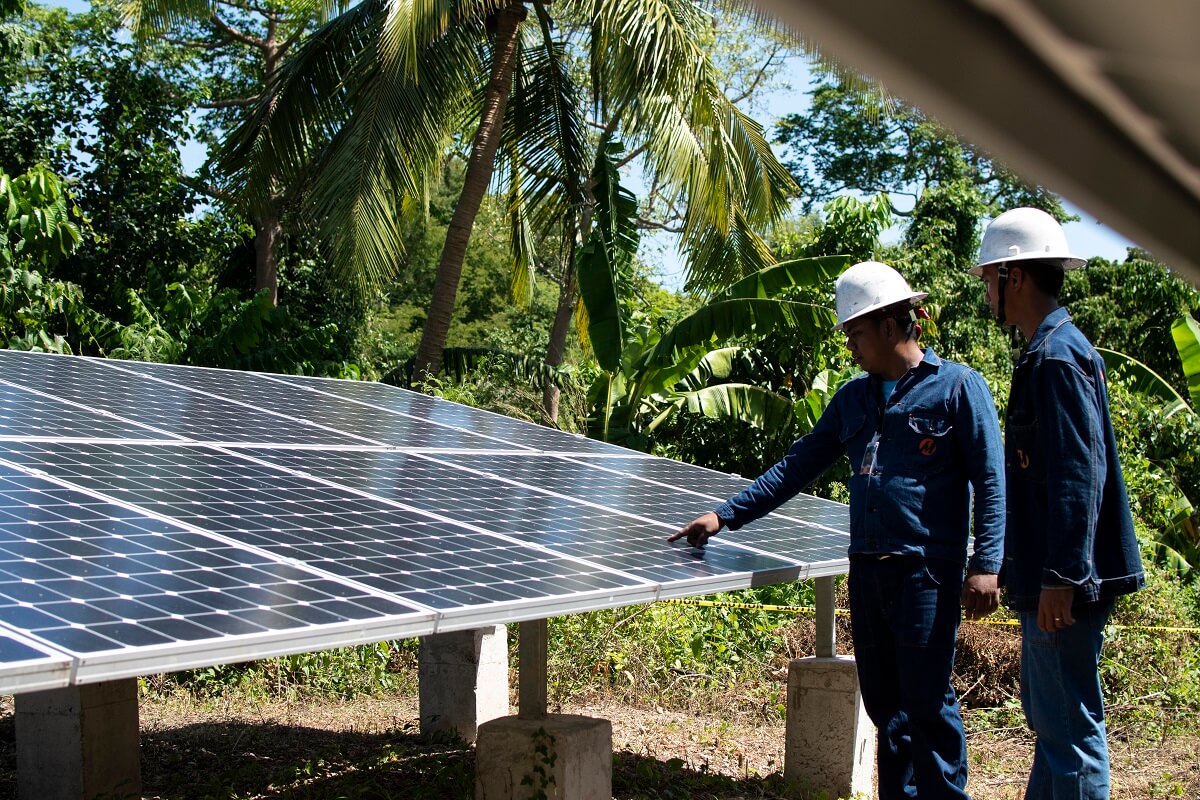Support CleanTechnica’s work through a Substack subscription or on Stripe.
The Philippine Energy Regulatory Commission (ERC) recently approved a P14.25-billion ($250 million) transmission network that will connect the MTerra Solar Project to the national grid. The decision allows Terra Solar Philippines Inc. to finish work on the high-voltage lines, which the company says are already 90% complete.
The transmission infrastructure will carry power from the solar installation in Nueva Ecija and Bulacan to consumers across Luzon. The facility, backed by Meralco, has already installed 778 megawatts of solar panels, making it the largest operating solar plant in the country. When complete, the project will generate 3,500 megawatts and include a 4,500-megawatt-hour battery storage system.
The company is working to bring the first phase online by early 2026. The timeline depends on finishing the transmission lines and securing final operational approvals.
The ERC approval revealed a problem with government infrastructure planning. The commission noted that the permanent connection point — a new substation needed to handle the full output — won’t be ready until between 2031 and 2040. The project will use temporary connections until then, exposing a gap between private sector development speed and public infrastructure capacity.
The project matters to consumers because it addresses electricity costs. Filipinos pay among the highest power rates in Asia, driven by dependence on imported coal and oil. When global fuel prices rise, household bills follow. The solar farm sells 850 megawatts to Meralco under a long-term contract at rates designed to undercut fossil fuel alternatives. Solar power costs nothing to generate once the infrastructure exists, insulating consumers from international commodity price swings.
The battery system solves the problem of solar generation ending at sunset. The storage allows the plant to release power during evening hours when demand peaks and the grid faces its greatest stress. This capability addresses a chronic weakness in the Philippine power system, which suffers brownouts during hot months when older plants fail or demand exceeds supply. The project is designed to serve approximately 2.4 million households.
The environmental impact centers on emissions reduction. The facility will prevent 4.3 million tons of carbon dioxide from entering the atmosphere annually, equivalent to removing more than 3 million cars from the roads. The calculation matters in a country already dealing with stronger typhoons and rising sea levels.
The construction phase has employed more than 9,500 workers in regions where manufacturing and industrial jobs are limited. Terra Solar runs training programs for green energy careers through its TERRAnsform initiative and has installed solar streetlights in surrounding communities through the BrighTER program. The company projects the investment will generate over 23 billion pesos in economic benefits to host communities over 10 years.
The project tests whether the Philippines can shift to renewable energy at a pace that affects consumer costs and grid reliability. The country has struggled to balance energy security with affordability while reducing dependence on imported fuel. The MTerra installation represents the largest single attempt to address all three issues simultaneously.
The transmission approval removes the final regulatory obstacle. What remains is execution — finishing the lines, completing the battery installation, and bringing the system online. The company faces pressure from Meralco and consumers to meet the early 2026 target. Missing it would delay relief from high electricity costs and push back progress on emissions reduction targets.
The gap between the project’s readiness and the government’s permanent substation schedule illustrates a broader challenge. Private developers can build renewable facilities faster than the National Grid Corporation of the Philippines can upgrade connection infrastructure. This mismatch could slow future projects unless addressed through policy changes or increased public investment in transmission capacity.
The solar farm’s success or failure will influence how other developers approach renewable projects in the Philippines. If MTerra delivers reliable power at competitive rates, it establishes a model for large-scale solar with storage. If it encounters problems with grid integration or fails to meet cost targets, it could slow momentum for similar investments.
For households, the question is straightforward: will monthly bills drop when the facility starts operating? The answer depends on how Meralco structures rates using the new solar supply, how much of the utility’s total generation mix comes from the plant, and whether fossil fuel prices remain high enough to make the solar contract competitive. The project’s proponents argue the economics favor consumers, but actual bill impacts won’t be clear until power starts flowing and rate adjustments take effect.
Sign up for CleanTechnica’s Weekly Substack for Zach and Scott’s in-depth analyses and high level summaries, sign up for our daily newsletter, and follow us on Google News!
Have a tip for CleanTechnica? Want to advertise? Want to suggest a guest for our CleanTech Talk podcast? Contact us here.
Sign up for our daily newsletter for 15 new cleantech stories a day. Or sign up for our weekly one on top stories of the week if daily is too frequent.
CleanTechnica uses affiliate links. See our policy here.
CleanTechnica’s Comment Policy


